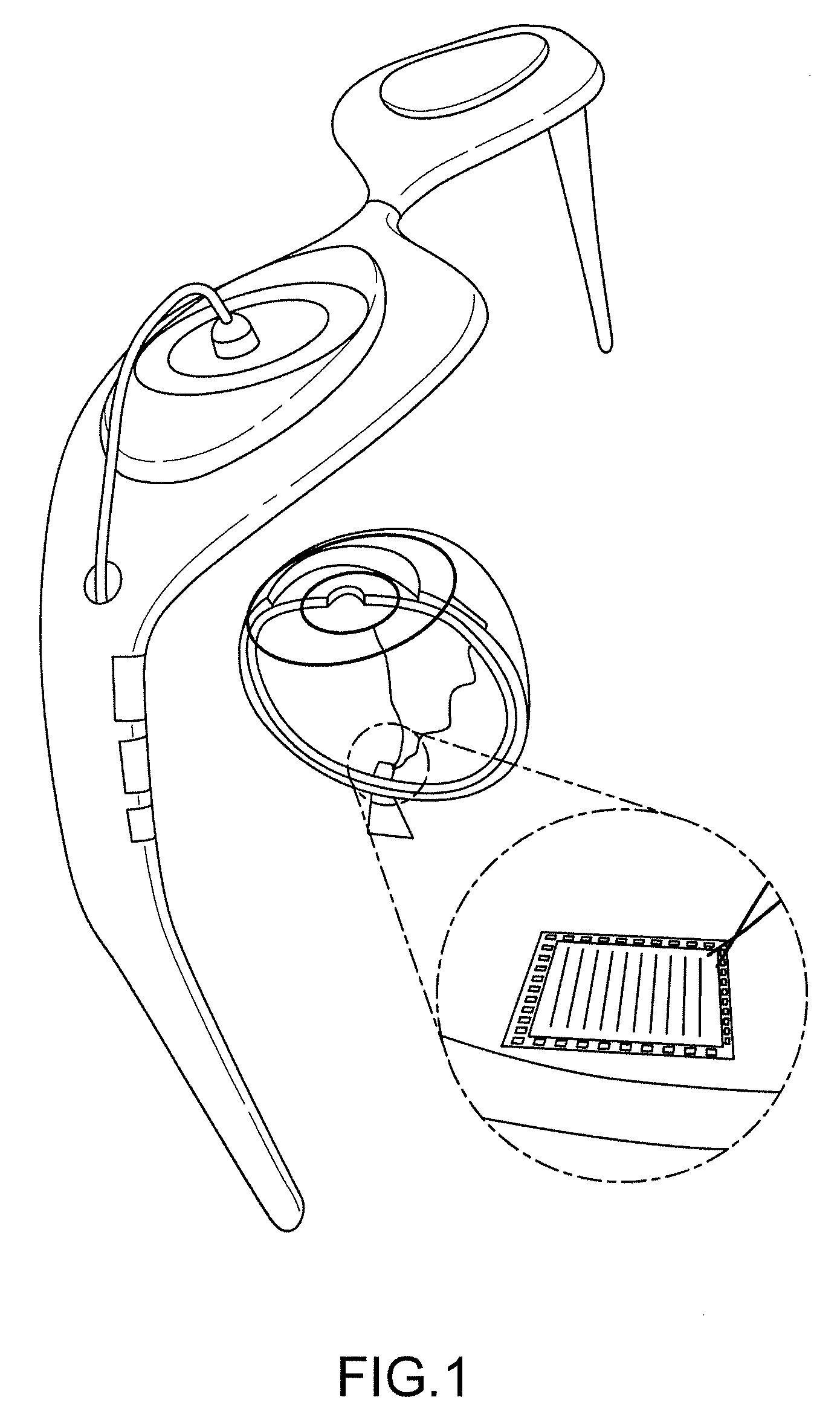Biocompatible implants and methods of making and attaching the same
a biocompatible and implant technology, applied in the field of biocompatible implants and methods of making and attaching the same, can solve the problems of not being able to achieve mechanical action, not being able to open the silicone structure via thermal means, and potentially harmful to the tissu
- Summary
- Abstract
- Description
- Claims
- Application Information
AI Technical Summary
Benefits of technology
Problems solved by technology
Method used
Image
Examples
Embodiment Construction
[0027]In a first aspect of the invention, a silicone article treated with a biocompatible compound is provided, and comprises a silicone substrate having at least one activated surface formed by irradiation with laser light at a wavelength and power sufficient to eject organic species from the silicone substrate, and at least one compound capable of binding to one or more integrins, coupled to the activated surface. In one embodiment, the silicone article comprises or is part of an implantable medical device or prosthesis, as described below.
[0028]Nonlimiting examples of silicone articles include silicone films, substrates, bulk objects, and silicone coatings. The silicone may be present as substantially pure silicone polymers or, more typically, silicone polymers containing one or more additives to enhance the article's mechanical, thermal, or other physical characteristics. Nonlimiting examples of such additives include fillers, such as silica entities (e.g., foamed, granular, fib...
PUM
| Property | Measurement | Unit |
|---|---|---|
| photon energy | aaaaa | aaaaa |
| temperatures | aaaaa | aaaaa |
| period of time | aaaaa | aaaaa |
Abstract
Description
Claims
Application Information
 Login to View More
Login to View More - R&D
- Intellectual Property
- Life Sciences
- Materials
- Tech Scout
- Unparalleled Data Quality
- Higher Quality Content
- 60% Fewer Hallucinations
Browse by: Latest US Patents, China's latest patents, Technical Efficacy Thesaurus, Application Domain, Technology Topic, Popular Technical Reports.
© 2025 PatSnap. All rights reserved.Legal|Privacy policy|Modern Slavery Act Transparency Statement|Sitemap|About US| Contact US: help@patsnap.com



